Justin Remo Exits Dogwater Beach
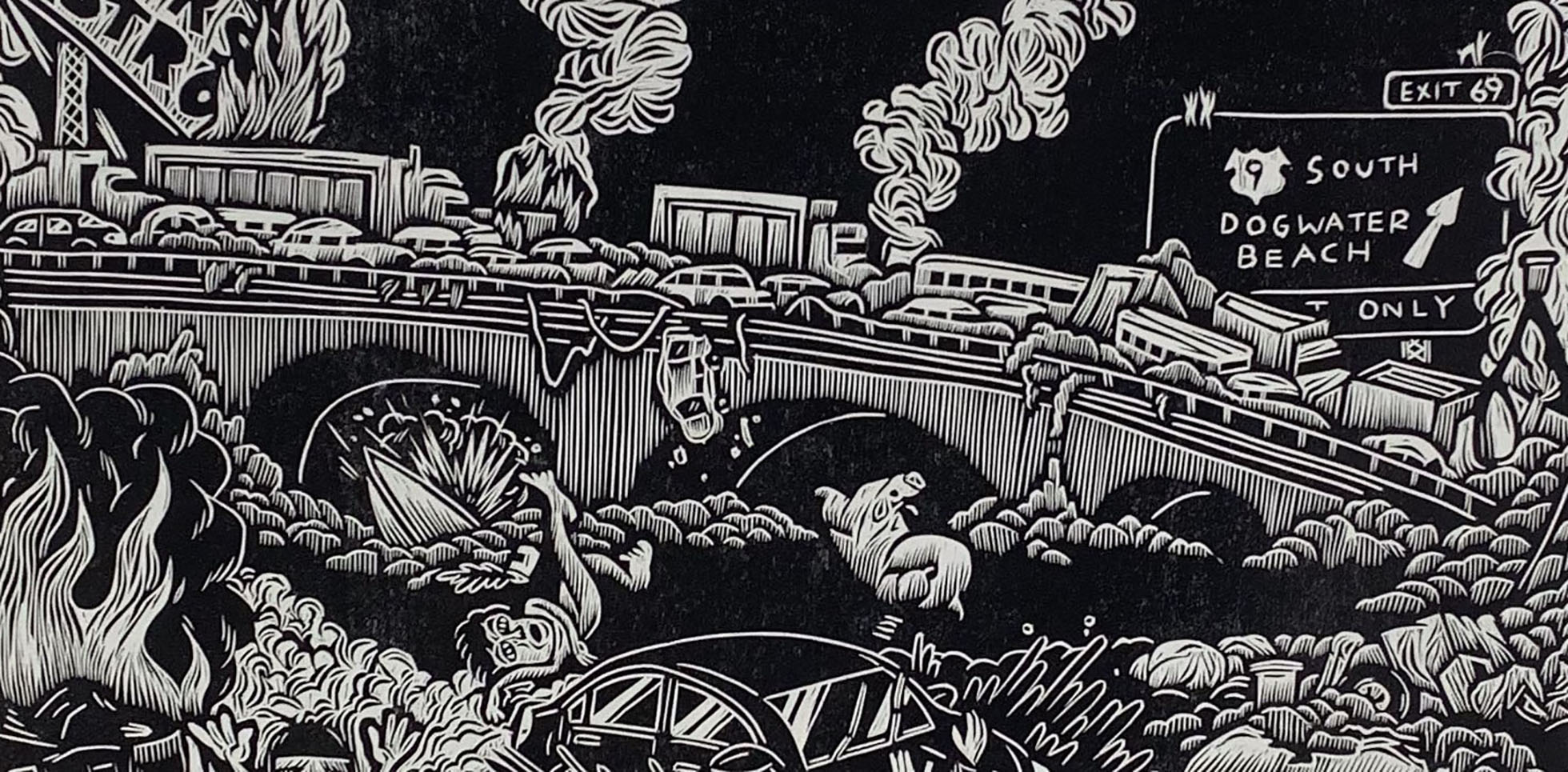
Introduction
What began as the need for a student to care for our dog and cat and water the garden while my husband and I spent four weeks in Italy in October 2022 has turned into the opportunity to watch a young man flower as a printmaking major at Maryland Institute College of Art. Justin Remo was not like the ordinary sophomore when we first met him in the spring of 2022. His experience as a Coast Guard reservist had likely matured him beyond his peers. (He had joined during the pandemic, when online instruction was pretty useless for a studio artist. On the practical side, he really needed money to offset MICA tuition.) Just as important, Remo tolerated, maybe even enjoyed, our rambunctious airedale Amos when we went for hikes.
Through his junior year, he was an industrious student of printmaking, trying to master many media, just about everything save screen printing. While technically some of his efforts were fine, I must admit I was not really taken with any of this prints. His real passion was “Dust,” a series of comics that germinated in high school and that, if as planned, would take years to complete. The back cover of the first issue reads: “Set in the post-Apocalyptic future of Earth, scorched into a chaotic desert by an unprecedented solar shift, society is transformed into a ravenous hellscape of pirates, scavengers and monstrous creatures.” No doubt there’s a huge audience for this stuff. I’m just not part of it.
But something happened over the summer before the start of his senior year. During a week at the beach with a host of high school friends, an idea dawned on him that would propel him to create a huge (“ambitiously insane”–his words) and quite remarkable, although scathing, suite of woodcuts that he would call “The Last Times on Dogwater Beach.” The endeavor would at times exhaust him, leaving him with little or no social life. But he needed to do it, not only to have a successful senior thesis, but in order to leave behind the world he grew up in. Or as he wrote: “At its simplest, the thesis is about moving on.” [his italics]
All these images of artwork by Justin Remo are copyrighted by Remo and are presented courtesy of the artist.
Remo before MICA
As with all of us, we carry our past with us, and the past plays an important role in future decisions. That is the case for Justin Remo, almost 23 as I write. (The following quotes by Remo were in response to a series of questions I sent him.)
His parents divorced when he was 3. While at first he said “it did not really affect me that much,” he added: “To be honest, I think that constantly switching between two homes allowed me to understand and empathize with my parents in a unique way. I would spend time with them individually, which meant that all the focus, learning, and love was directed at one at a time. I got to see their separate lives as I grew up. Their successes, their struggles, their highest and lowest points, friends that came and went, relationships that bloomed and flickered out, it was like two movies happening at the same time.”
This role as an observer carried over to his senior year in high school in the northern New Jersey town of Wyckoff. For a sociology class, he devised a solo video project he called “The Good.” “By then I had been deeply involved in a group of friends that I regularly spent time with, I began connecting certain topics being taught with specific social intricacies with the people I was with. My plan was to interview each of the members of this ‘friend group’ that I had grown up with, asking them the same questions regarding how they view their relationships with each other, and how they are affected by them. Throughout the year I conducted interviews with each of my friends, and from January to July 2019, I brought a GoPro camera everywhere I went with them. Every hangout, sleepover, holiday, and event was documented, leaving me with hours of nostalgic footage with my hometown friends.”
Remo continued: “Being the producer, I got to receive everyone’s perspectives on themselves and others. Insecurities and fears of the future were shared so openly, that I felt that I understood them on an entirely new level, and felt less alone about my own. Simultaneously, I feel that the project revealed how I treat relationships in my life. Very analytical, always trying to understand and observe everyone around me.”
Remo developed a number of close friends that he would regularly spend time at a beach house on the Jersey Shore that inspire many aspects of his thesis.
“These friendships were years long, as I am still at least in contact with all of them in some way. From elementary school all the way to college.” In fact those long-term friendships played out last summer (between Remo’s junior and senior year at MICA) when he and 16 of them again rented a beach house. If that hadn’t happened, Remo’s senior thesis as a printmaking major certainly won’t be titled “The Last Times on Dogwater Beach.”
COMICS OBSESSION
Just as his friendships were fuel for his thesis, so was his obsession with comics, devouring them then making them. As a high school senior, he came upon the series Scott Pilgrim series of comics. “That was my first exposure to comics and after binge-reading the series in two days, I was hooked on comics.” He checked out everything from his local library. “Anything I couldn’t get my hands on, I pirated off the web. I had to saturate my mind with as many graphic novels as humanly possible.”
“I had been experimenting with comics through sketches and short stories that I illustrated on the margins of my homework assignments throughout high school, but it was not until MICA that I decided to follow through and try to create my first full-length comic series. By the time I began my first semester at university, I had already decided that I wanted to become a graphic novelist, but I only began thinking of myself as one until I released my first comic issue.”
“Dust is a science-fiction graphic novel series that I have been writing, illustrating, and self-publishing since 2018. The narrative follows a group of medieval knights exploring a scorching post-apocalyptic wasteland in search of clues that will uncover the truth behind the death of one of their fellow soldiers”
“However, I would say the core issue the novel explores is fatal flaws, and no characters explore this better than the nine fated knights that act as the protagonists to the narrative. Every Dust Knight is appraised with a specific skill, personality, or wisdom that helps them throughout the novel, and aids the others in extreme situations. However, each is also given a fatal flaw: some detail, obvious or secret, that ultimately leads them to their worst nightmares.”
“Looking into why I chose to explore that specific core issue, I think it relates to the way I look at individuals. The people around me in my day-to-day life are great examples for characters, seeing who they are on the surface, then occasionally understanding more about them as I am around them more frequently. Ugly truths, hidden personalities, traits that cause them to repeat mistakes again and again. I think that we all have fatal flaws, and it isn’t a very morbid thought, I just like to think of it as the universe’s greatest punchline.”
Remo’s Dust is certainly an ambitious project. He plans 54 individual issues. Every 6 issues will compose a volume, and there will be 9 volumes when Dust is complete.
“Right now I am still working on that first volume, but I have high hopes for post-graduation, a phase of my life that will allow me extra time to produce more chapters. While I am still just at the beginning of my journey, I know Dust will be a hit. It isn’t a matter of if; it’s just a matter of when.”
As you’ll see, all of that obsession and energy and practice in comics story-telling has been a rehearsal for “The Last Times on Dogwater Beach.”
Lightning on the beach
Accompanying Remo on last summer’s beach week with friends was a small journal book. Former MICA professor Gail Deery suggested that he carry a small book with him that would serve as his thesis sketchbook. “Due to its size, I was able to bring it with me everywhere for my last summer vacation before graduation, allowing me to collect all verbal and visual ideas immediately. I have had many sketchbooks before, my other primary book being one I use only for Dust-related material; however, this one was incredibly personal, including many deep emotional thoughts that would aid in creating my thesis.”
Of course, he took his thesis sketchbook to the beach during last summer’s week with his friends. “Flipping through the pages of my thesis sketchbook, I love seeing the progression of my thesis develop. However, the most influential series of pages that helped finalize my thesis were drawn during my aforementioned week at the shore.”
During that beach week, he was dismayed by the physical degradation of the Jersey Shore by construction vehicles and copious mountains of waste and began comparing it with the emotional landscape of personal connections of those he spent time with at the shore.
He produced a lot of sketches in his journal recording visual ideas inspired by familiar faces and an nostalgic surroundings including what happened during an intense psychedelic experience, which he described as “an emotional and intra-personally spiritual augmentation that lasted four and a half hours, all of which was described and illustrated in my sketchbook.”
Notice the text above the door: “I feel I am coming to the end of my journey, I will be encompassed into the box. I am hesitant. Why do I hesitate? Go ahead. It’s OK.” What followed were several under-the-influence pages of tiny text. The experience must have begun very reassuringly as, if you look very closely and read: “I feel loved and hugged by the Earth.”
“After having that experience, surrounded by my closest friends encompassed in a dollhouse on the Jersey Shore, I knew what my thesis was going to be. I had a few ideas in mind that I was playing around with in the beginning … but this experience brought it all together, wrapped up in a nice bow.”
Remo’s thesis became “very personal portrayal of solastalgia: a form of existential or emotional distress caused by environmental change. My work focuses on three aspects of this personal solastalgia: the dramatic negative changes in my planet, my hometown, and my closest friends.”
The above portraits of Remo’s friends were sketched over the summer of 2023. Remo would mine these portraits for his thesis printmaking project.
Thesis takes shape
While Justin Remo’s thesis project originated on the beach, it would be realized throughout his senior year at MICA. His very ambitious project would be in two parts: four 21″ x 35″ woodcuts, then a massive nearly 4′ x 8′ panorama of him and his friends on fictitiously-named Dogwater Beach.
“By the end of last semester, I managed to finish carving and printing two woodcuts, as well as creating two monotypes. Throughout the semester, I gradually worked on the sketch for my large, three-block woodcut, adding expressive and loose drawings with vine charcoal to a 4’ x 8’ newsprint sheet I taped together on my studio wall. Over the winter break, I finished carving another woodcut, which I printed upon returning to campus.”
The Last Times on Dogwater Beach
Not only did Remo sketch portraits of friends in his journal, he also largely realized the images for his four 21″ x 35″ woodcuts.
I’m presenting the four block in the sequence in which Remo worked on them. He wrote: “There isn’t a sequence to the pieces quite yet. I want to finish all four before I decide who they will be paired with, after comparing the darks and lights and whatnot. What I can say is that the overall arrangement will have the three-block mural at its center, two woodcut prints on the left and right of it, and any other prints, books, and plates I make will be organized into the exhibition as the semester continues.”
“The first woodcut [Block A] has my favorite composition of the group, so I started with that one. After finishing one, I would look at the sketches and choose based on whichever one I wanted to take on next [which turned out to be Block B].
Each of the three finished woodcuts and the fourth drawing are presented separately with Remo’s descriptions of the contents.
Observing his progress last fall, I noted a very obvious fact. Everyone is naked. So I asked Remo why. He responded in an email:
“This series is inherently revealing, as it unveils a lot of repressed emotions and fears that I am setting free and encapsulating in this work. Therefore, it is only appropriate that everyone be in their most vulnerable, primal, shameful or prideful appearance. There are various reasons why I chose for all characters to be unclothed in this series, including myself, but none more prevalent than the animalistic scene of primal vulnerability. I feel that nudity adds a layer of chaos, but shows these people as exposed and unprotected throughout this apocalypse. They are campaigning a scene of hedonistic desire and destruction, establishing that there are no rules to be followed, no boundaries. This beach is a lawless frontier, naked and afraid.”
While the images of the principal characters in each of the following four blocks (actually three blocks and a planned fourth) could be linked to Remo’s friends, the artist preferred not to identify them and describe why each was chosen to be in one of the blocks for fear that those personal connections would blur the important messages behind each block.
Block A: Swallow your Pride
“The first woodblock (labeled A) is titled, ‘Swallow Your Pride.’ Each of the woodblocks focuses on a specific aspect of hopelessness I experience witnessing tragic degradation within my home and across the planet. This one depicts a scene of gluttonous laziness, behaviors that I have seen from many people around me, and have indulged in myself. This portrait exhibits awful habits, characters carelessly gorging their desires without even knowing their own obsessive tendencies. Whether it be eating cruddy junk food, constantly smoking weed, or obsessing over smartphones, these addictions are ones that are very difficult to discourage and pitiful to see. I believe these addictions keep people (myself included) from moving forward in life, comforts that sedate their fears of adulthood. We are constantly given access to and force-fed these addictions. Featured in this first piece is the fattened presence of a cow, an exploited and abused animal that once represented a symbol of strength and discipline, now codified by America as a beefy hunk of meat, waiting to be slaughtered. These creatures, like the characters in this piece, are forced to consume the very things that hurt them. The treatment of these animals is disgusting and, like all the animals represented in this series, they are scenes of helpless and hopeless horror that I feel powerless to change. Seeing how we disrespect what is seen in some countries as a sacred animal is appalling.”
Block B: No Strings Attached
“This scene is one of lustful debauchery, uncomfortably exuding sexual repression and obsession. Another portrayal of messy desires being carelessly fulfilled as bombs tear the world apart in the distance. Rabbits, animals used to represent procreation, are strewn across the boardwalk, indulging in the same primal behavior as the humans above them. All the creatures in this space carelessly revel in pleasure, exhibitionists in a disgusting public orgy…. In regards to those I leave behind, this is a shameful display of their apathetic desire for sex and intimacy, without care whom it affects, who ends up getting hurt, or what others think. The emotional torment seen all too often when intimacy is taken advantage of and becomes a carelessly exploited desire rather than a respectful exchange of meaningful vulnerability.”
Block C: Throwing Caution to the Wind
“I feel that the title describes the scene perfectly, one that portrays those familiar to me throwing their lives in the ring in exchange for adrenaline-kicked thrills. I have never understood the sensation of risking one’s own life for reasons so ridiculous. While the golfing grenades [lower right] are an exaggeration, the use of vehicular chaos is all too real. In New Jersey, cars are our most essential yet disgusting tools. While they are a necessity for getting anywhere in my state, they are also used for the most horribly ignorant shenanigans, often getting people killed in the process.
“All too often did I see and hear stories of the most empty-headed tragedies imaginable. High-schoolers dying from running naked across the highway, driving 120 miles per hour while stomaching seventeen bottles of Corona, or mindlessly whipping their million dollar silver Jeeps in circles until they end up curled around a fire hydrant. It always blew my mind watching these rich kids get their dream car for their seventeenth birthday, only to lose it a week later because they decided to risk it all for some fun, or to impress their friends….
“I feel that this piece embodies the New Jersian cliche at its heart: traffic, huge exit signs, rich dudes drinking, playing golf, and drunk driving their Nissan’s into anyone and anything within sight. I am honestly shocked at how some of my friends have evaded a gruesome death for so long with the stunts they regularly pull.”
Planned Block D: Don’t Hold your Breath
“This one is a scene of mindless violence, wrath pinning human against humans. I have encountered many people, including friends, who have no regards for others, only focusing on themselves, sooner leaving companions behind before letting themselves fail. The careless destruction of lives around them. This battlefield is an extremification of the violence I witness at an interpersonal scale, portrayed through the global lens of something seen on the news almost daily. War, death, hunger, destruction, all for the sake of what?
“A burning unfolds in the distance of the shore, a light jab at the religious hatred seen across history and our present. Seeing such an apocalypse is irritating beyond all belief, but what can I do? This is another scene in which I watch without any power to stop it. What can I do to save anyone? What can I do to convince anyone to see past their hatred?
“And at its simplest, that’s what this scene is: hate, taking an extremely gory, yet unfortunately common form. With everything going on across the world: school shootings, wars, terrorism, corruption and racism buried so deep within our most powerful seats of office, I find it baffling that we are able to live our lives normally. I can’t do anything, so I might as well move on, right? A question and solution that I see in this entire series. A horse stands as the primary animal in this piece, a symbol of strength, courage, freedom, and death; a vehicle of war and escapism.”
Remo’s Synopsis
“These four woodblocks create focused portrayals that add to the larger construction of emotions funneled into my main woodblock mural. They tackle specific categories of shameful behaviors, addictive tendencies, apathetic lifestyles, and miserable states of mind. All of which I have seen in others and myself. I attempt to encompass these in my prints, carving them into wood as time capsules. As I take the next steps forward in my life and professional career, I look back on what I truly leave behind, amalgamated with what fears and insecurities that continue to accompany me as I grow away from my home. So much of it feels out of my control.”
“I attempt to incorporate a moment of impact within each one of these prints: the boom, the car crash, the plane falling, the gun shot. That is my way of saying that all of this chaos already exists all around us. I see it at a grand scale across the world and at a minute scale within my hometown. But in an instant, it feels like everything could fall apart, as if our very society is held by a thin string, waiting for the moment of impact to send us into the apocalypse.”
Art I See Synopsis
Justin Remo writes about his helplessness regarding the beach, the planet and his friends: “I can’t do anything, so I might as well move on right?” But he hasn’t moved on and he’s isn’t helpless. He’s creating this astonishingly, intensely introspective, visual narrative of his growth and struggles as a person. And if he needs to move on from childhood and early adult friendships based on growing up in New Jersey, then he should.
Ironically, my parents made a number of moves as my father changed jobs during my teen years. So many changes that when I newly arrived in Baltimore County for my senior year in high school, I wasn’t able to make any friends, maybe even didn’t want to make friends. It didn’t seen worth it. I had barely made friends when I spend my sophomore and junior high school years in Clearwater, FL. and then they were gone when we moved north. I’m saying this because I’ve always envied and have been in awe of kids who stayed put through their pre-college years and made lifelong friends. And here is Justin Remo saying so explicitly and with so much despair in words and images that he needs to move on.
I look froward to blogging at the end of his senior year and present how Remo’s three-block woodcut mural comes to fruition.
Trackback URL: https://www.scottponemone.com/justin-remo-exits-dogwater-beach/trackback/

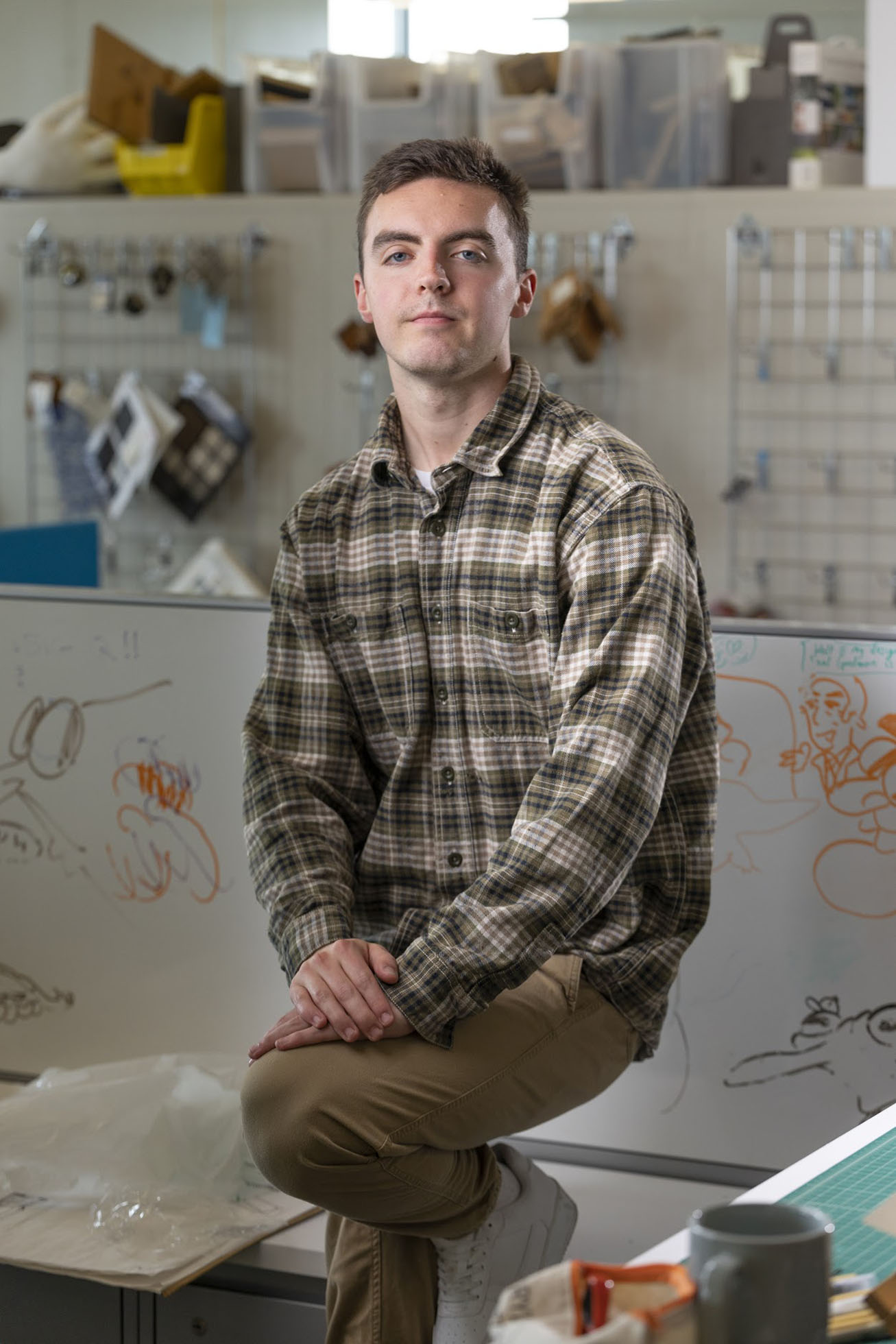

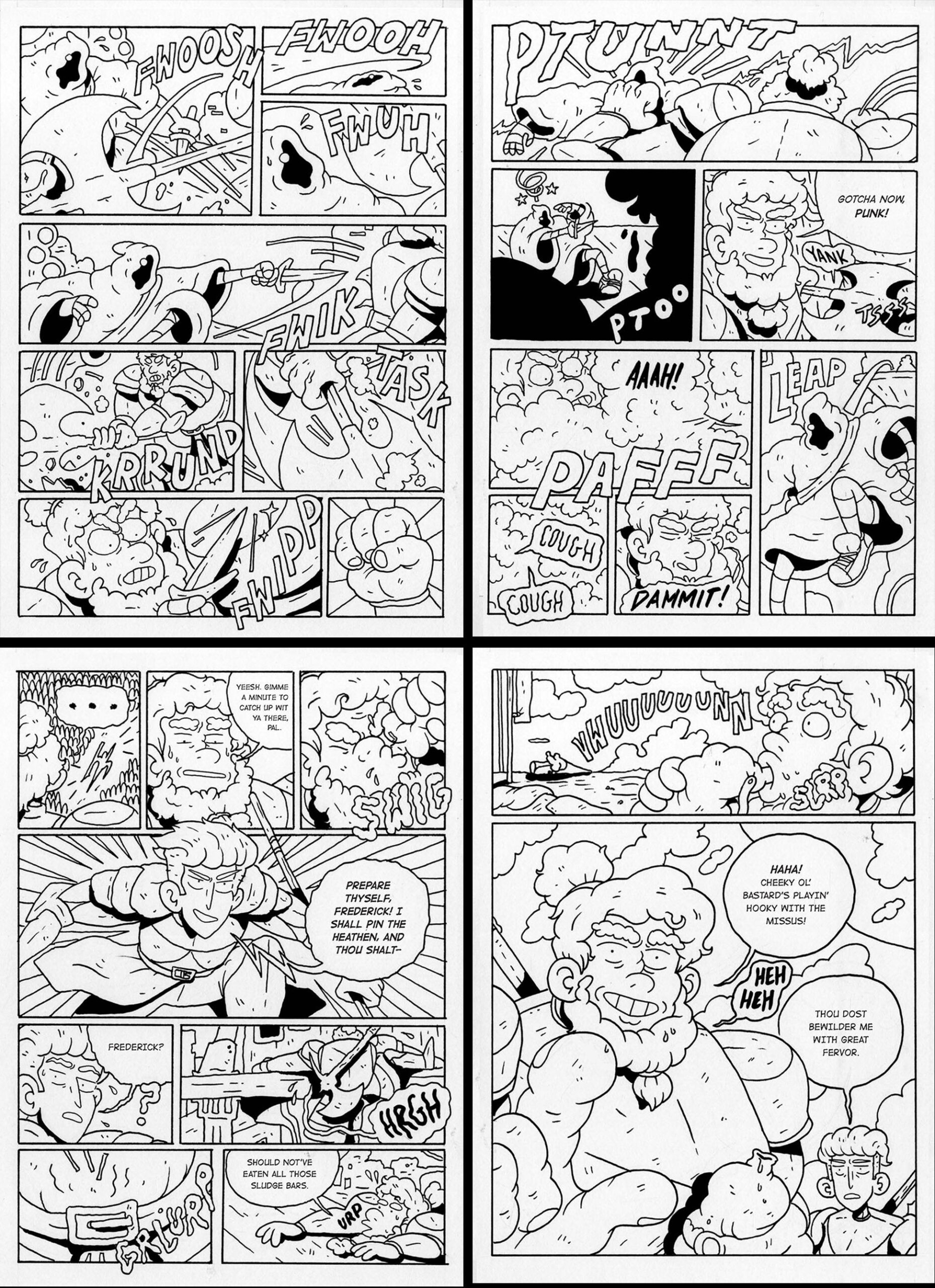
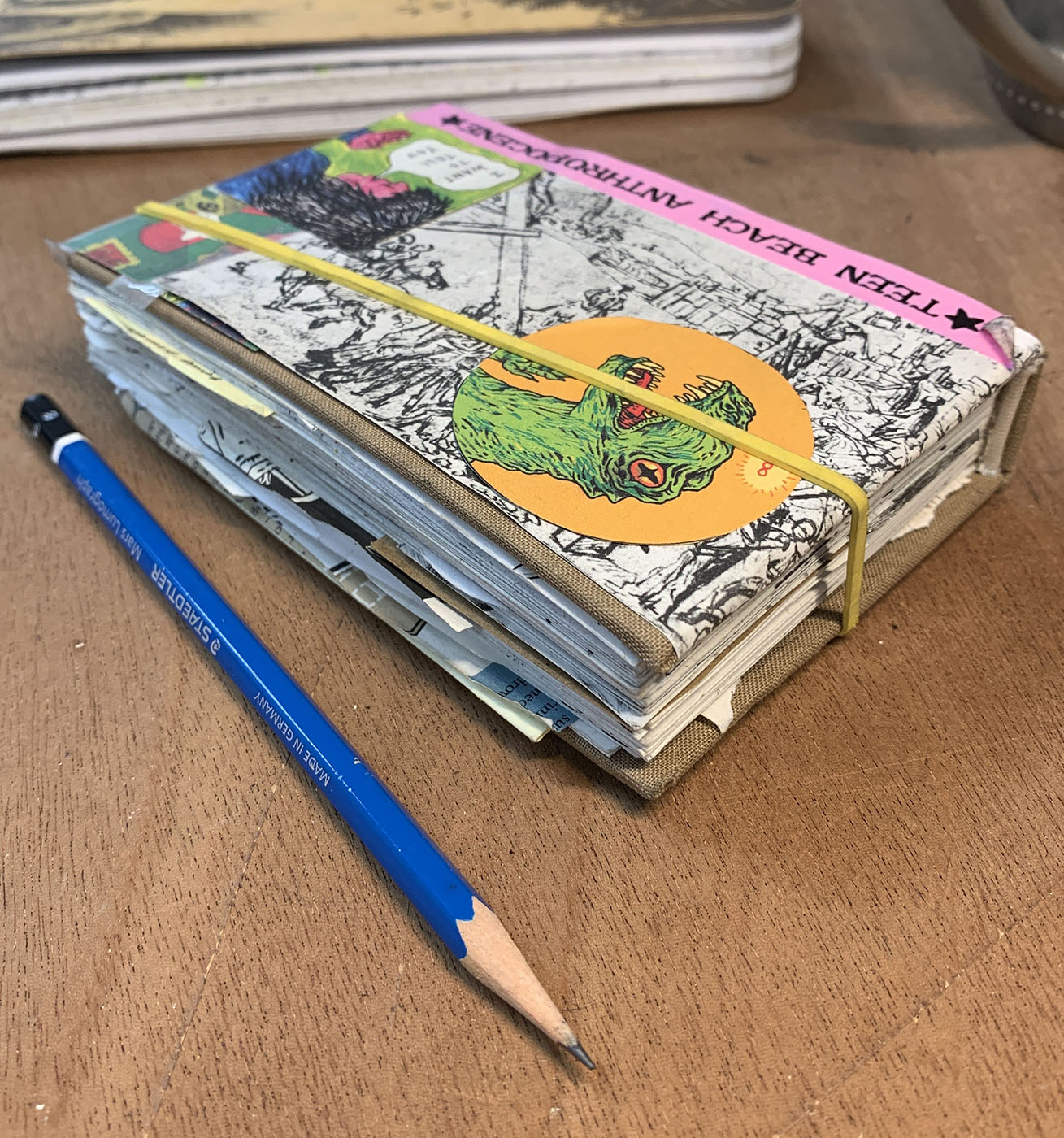

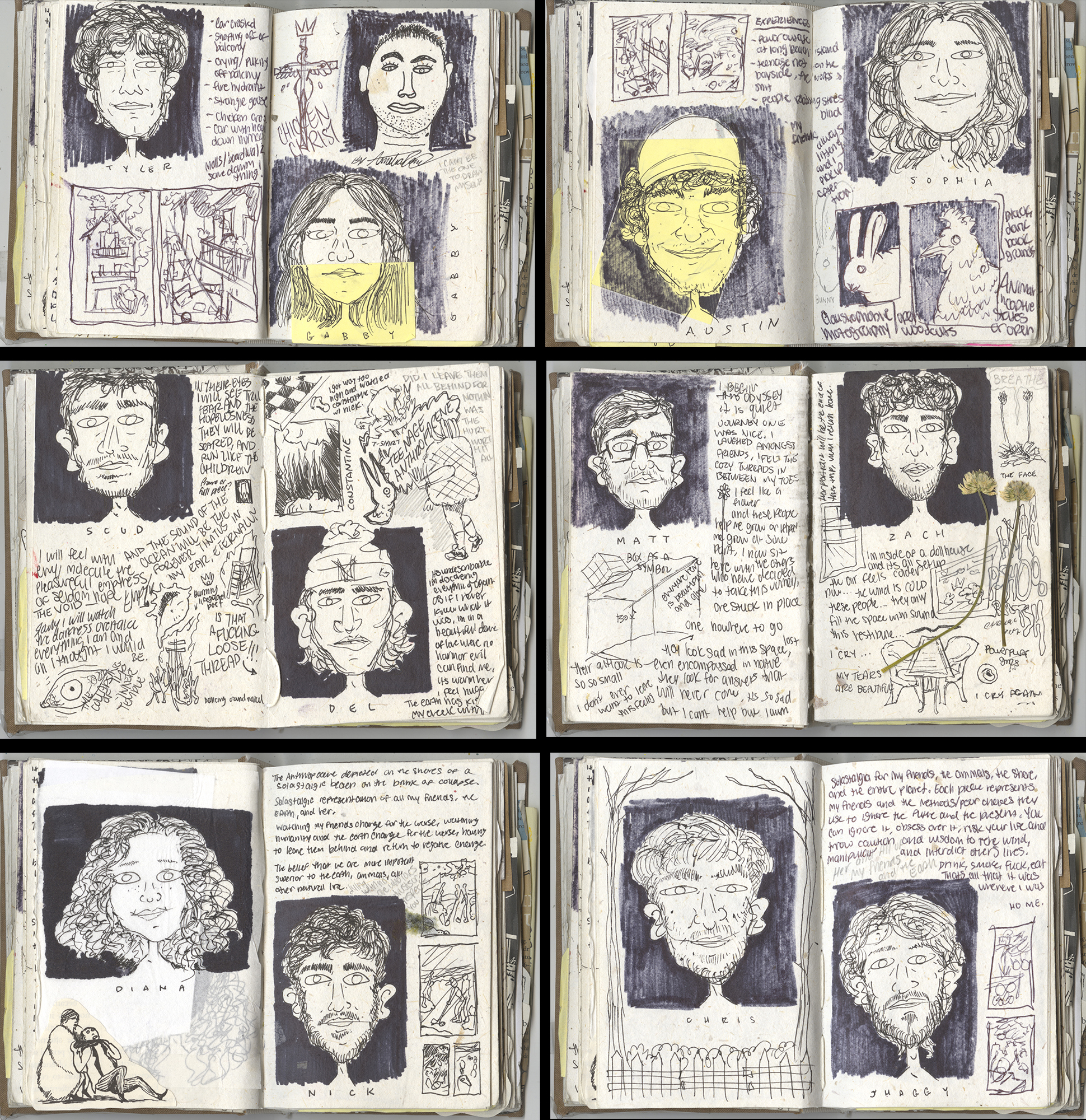

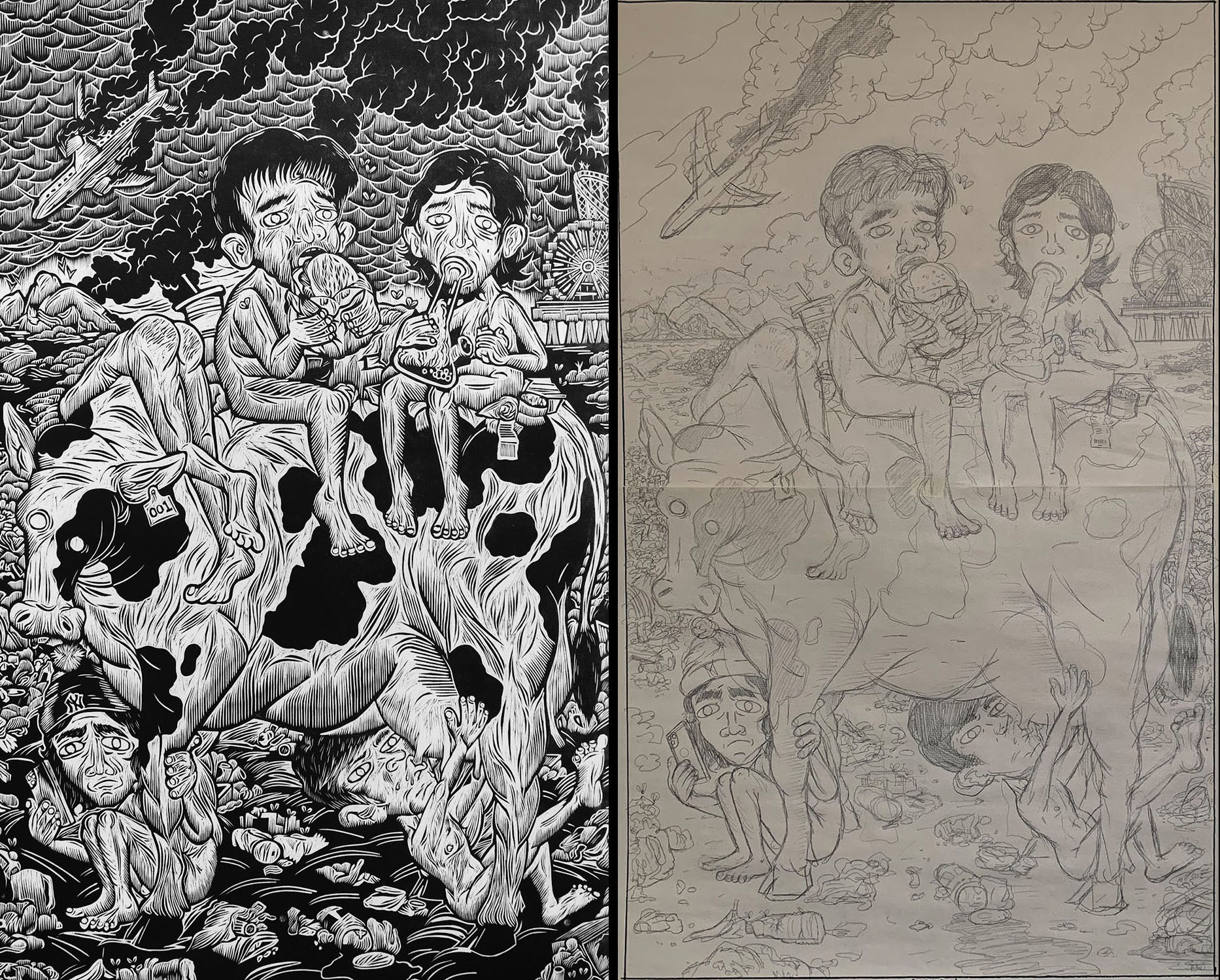
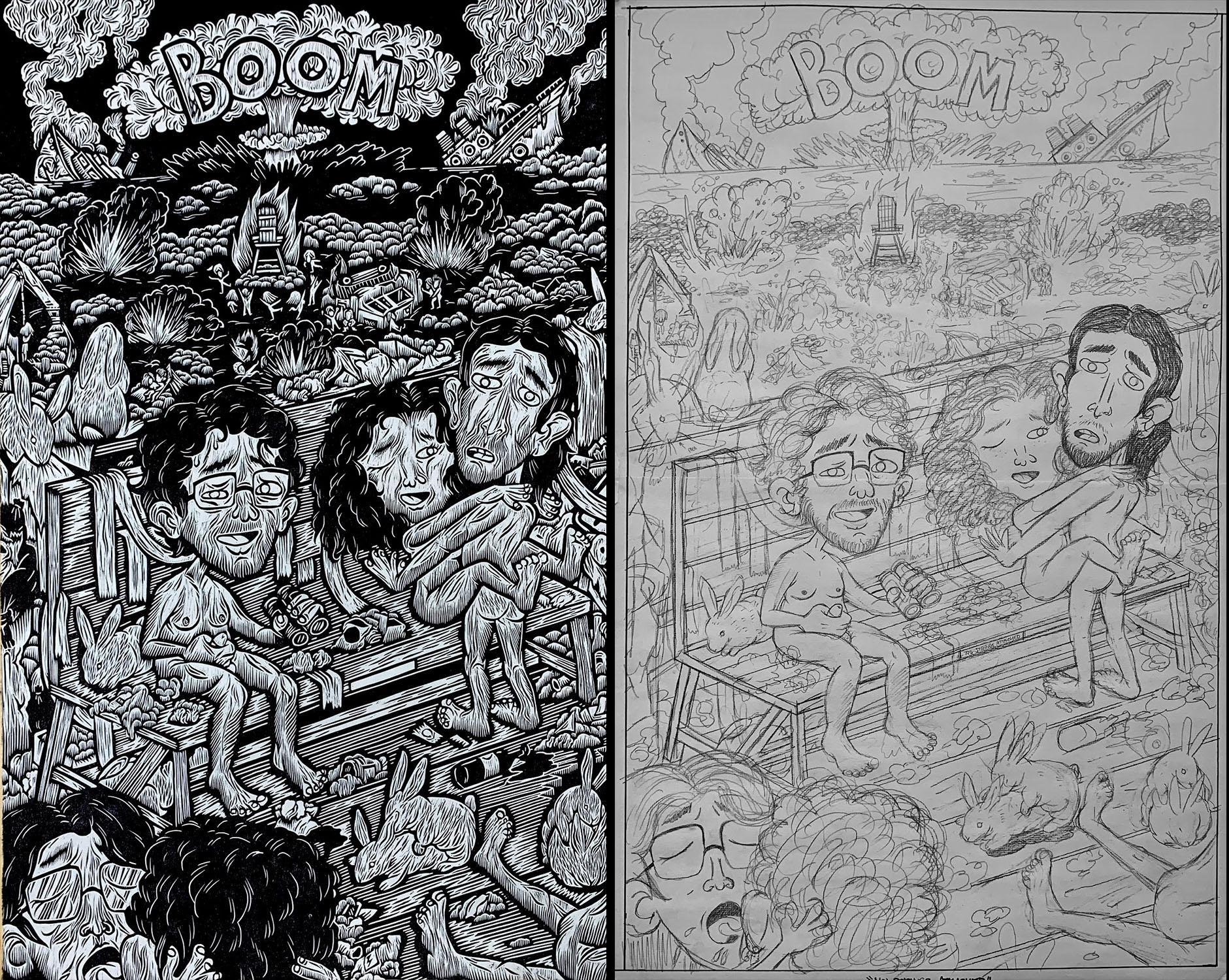

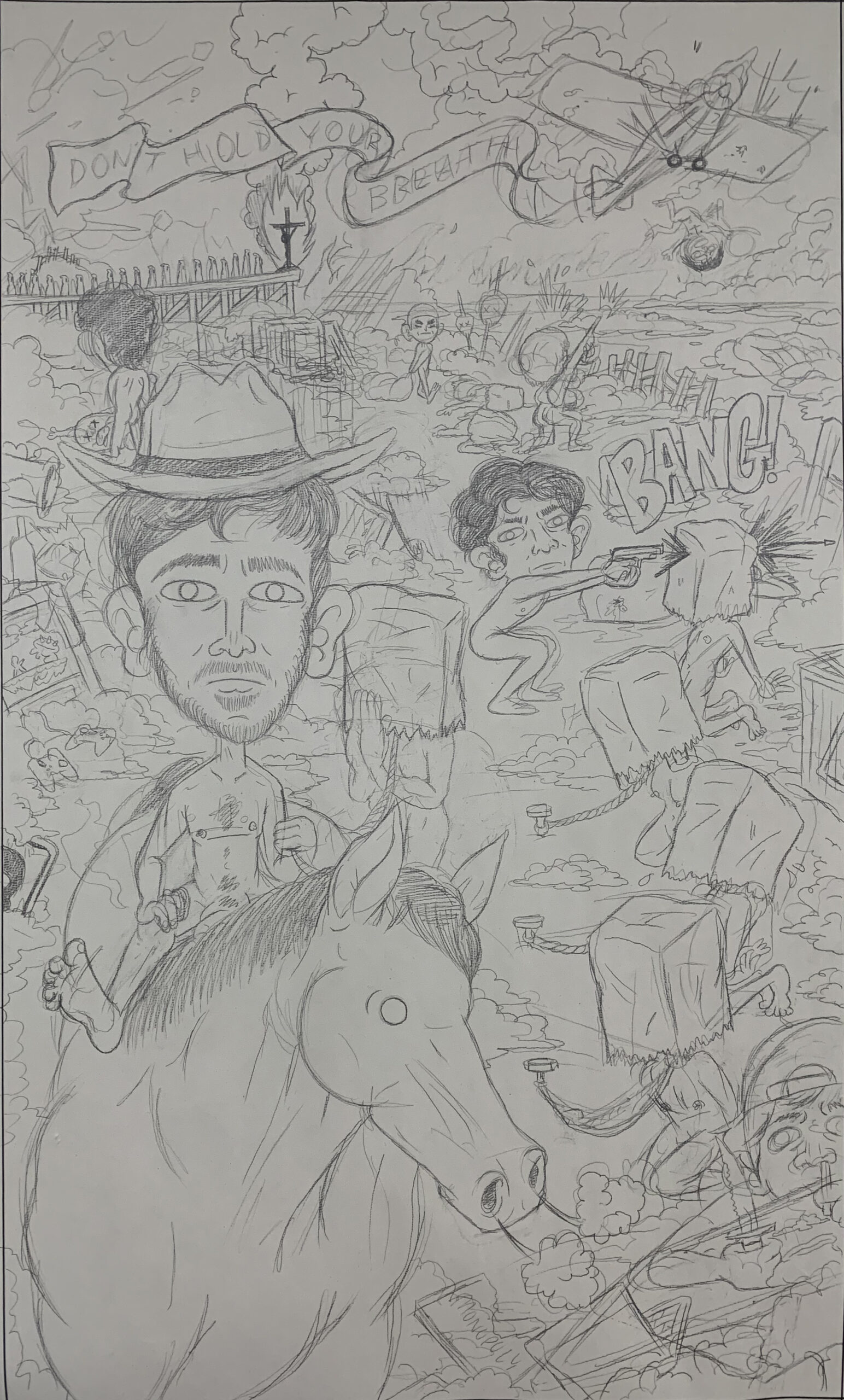










Pingback: Justin Remo’s Big Finale